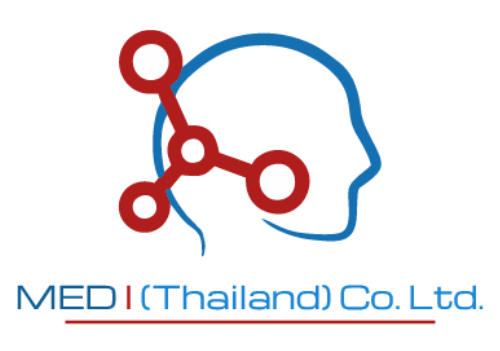The world of medicine is changing fast, and Asia is right at the center of one of its most exciting transformations. Radiopharmaceuticals, once seen as highly specialized tools used only in advanced hospitals, are now becoming essential in the fight against cancer, heart disease, and neurological disorders.
But what does the future of radiopharmaceuticals in Asia look like? And how are countries like Thailand, India, South Korea, and Japan shaping this future?
Let’s explore how innovation, investment, and increasing demand are turning Asia into a global hub for radiopharmaceutical development.
What Are Radiopharmaceuticals?
Radiopharmaceuticals are drugs that contain radioactive materials. These materials help doctors diagnose or treat various diseases. They’re commonly used in nuclear medicine procedures, such as PET (Positron Emission Tomography) and SPECT (Single Photon Emission Computed Tomography) scans.
Two Main Types of Radiopharmaceuticals:
- Diagnostic – used to detect diseases inside the body (e.g., cancer, heart issues).
- Therapeutic – used to treat conditions like thyroid cancer or bone pain from tumors.
With modern healthcare shifting towards personalized treatment, radiopharmaceuticals are gaining more importance than ever before.
Why Asia Is Becoming a Hotspot
The future of radiopharmaceuticals in Asia is looking bright due to a perfect storm of factors:
Rapidly Growing Population and Aging Demographics
Asia has a massive and aging population, especially in countries like China and Japan. This creates a high demand for diagnostic tools and cancer treatments—areas where radiopharmaceuticals shine.
Strong Government Investment
Governments across Asia are investing heavily in nuclear medicine infrastructure. For example:
- Thailand is building cutting-edge radiopharmaceutical labs.
- South Korea and Japan are funding research and development (R&D).
- India is expanding its isotope production facilities.
Rising Cancer and Chronic Disease Rates
According to the World Health Organization, cancer rates in Asia are increasing rapidly. The need for early detection and effective treatment methods means radiopharmaceuticals will be in high demand for years to come.
Key Trends Shaping the Future
The future of radiopharmaceuticals in Asia is being driven by these powerful trends:
1. Domestic Isotope Production
Many Asian countries are investing in local isotope production to reduce dependency on imports. Cyclotrons and reactors are being built to ensure a steady supply of key isotopes like F-18 and Tc-99m.
Benefits:
- Faster delivery of radiopharmaceuticals to hospitals
- Lower production and transportation costs
- Greater independence from international supply chains
2. Expansion of Nuclear Medicine Facilities
Hospitals across Asia are setting up nuclear medicine departments. New radiopharmacy centers are being constructed to meet growing demand.
Thailand, for example, is becoming a regional leader in nuclear medicine infrastructure.
3. Collaboration Between Public and Private Sectors
Universities, government bodies, and private healthcare companies are partnering to:
- Train radiopharmacists and nuclear medicine technologists
- Develop innovative treatments and imaging solutions
- Promote clinical research and trials in radiopharmaceuticals
4. AI and Imaging Technology Integration
Advanced AI tools are being used to enhance diagnostic imaging, making it faster and more accurate. This synergy between tech and radiopharmaceuticals is a major growth driver in the region.
Challenges to Overcome
While the future of radiopharmaceuticals in Asia is promising, several challenges remain:
Regulatory Barriers
- Each country has its own rules for radioactive material handling and facility licensing.
- Streamlining regulations across Asia could boost regional trade and cooperation.
Short Half-Life of Isotopes
- Radiopharmaceuticals often have very short shelf lives (sometimes just hours).
- That makes local production and fast logistics essential.
Lack of Skilled Workforce
- There’s a shortage of trained professionals in nuclear medicine.
- More educational programs and certification pathways are needed.
Opportunities for Growth
Despite the challenges, the opportunities are vast. Here’s where Asia can truly shine:
Medical Tourism
Countries like Thailand, India, and Malaysia are attracting international patients looking for affordable, high-quality care. With strong radiopharmaceutical infrastructure, these nations can offer world-class nuclear medicine treatments.
Research and Development Hubs
Asian cities like Seoul, Tokyo, and Bangkok are emerging as R&D centers for new radiopharmaceutical therapies. Companies are increasingly setting up innovation labs in the region.
Export Potential
As production scales up, Asia could become a major exporter of radiopharmaceuticals to other regions, including the Middle East, Africa, and parts of Europe.
Conclusion: Asia Is Leading the Way
The future of radiopharmaceuticals in Asia is not just about catching up—it’s about leading. With the right investments, training, and innovation, Asia has the potential to become the world’s radiopharmaceutical powerhouse.
For medical professionals, investors, and healthcare providers, this is a space to watch—and be part of.
Ready to Explore Opportunities in Asia’s Radiopharmaceutical Market?
Whether you’re looking to set up a facility, explore regional partnerships, or need expert guidance on regulatory compliance, MED I Thailand can help. We specialize in radiopharmaceutical project planning, facility design, and supply solutions tailored for the Asian market.
